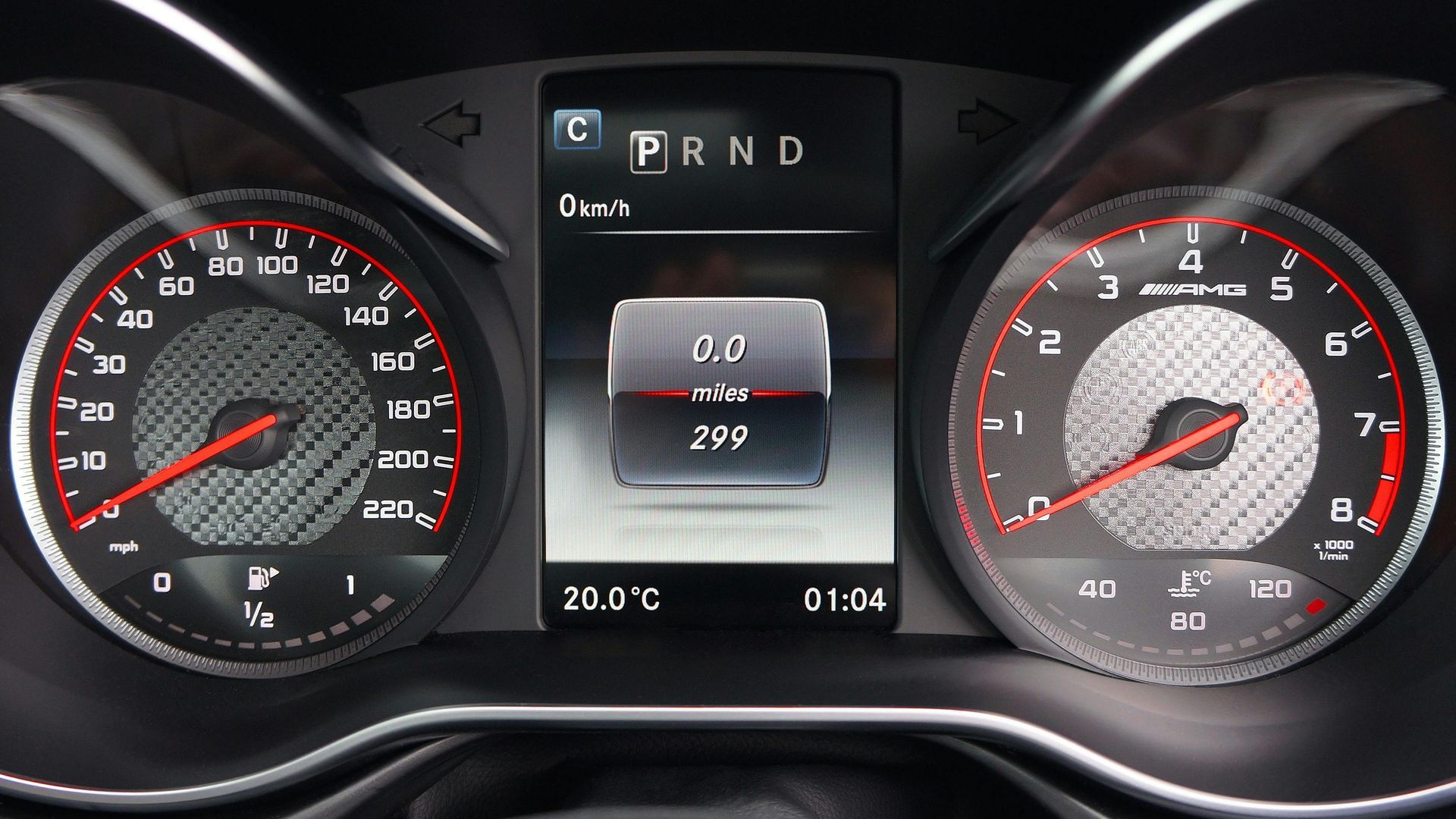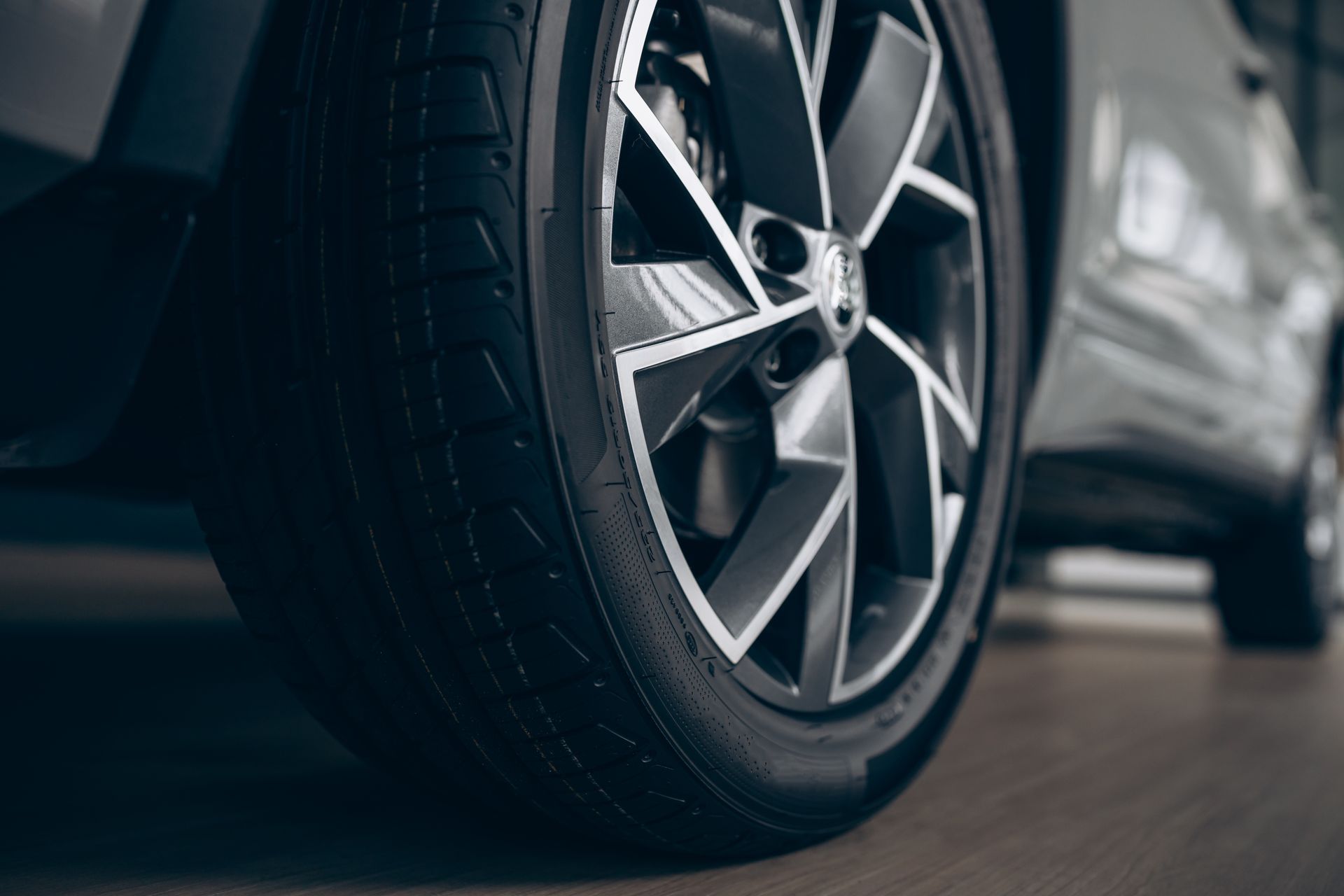Winter Weather Driving: Essential Car Care & Safety Tips for Chicagoland & DeKalb
October 9, 2025
The Midwest Winter Reality
In Chicagoland and DeKalb, winter isn’t just a season, it’s a survival test. Every year, drivers face polar vortex cold snaps, icy highways, snowdrifts taller than bumpers, and unpredictable whiteouts. Roads that are clear one minute can turn into ice rinks the next, and bitter wind chills test both vehicles and their drivers.
Ask any seasoned commuter: a car that isn’t properly prepared can leave you stranded at the worst possible time. We’ve seen batteries fail in grocery store parking lots when temps plunge below zero, commuters spin out on black ice along I-88, and families in DeKalb get stuck in unplowed subdivisions after a storm.
At Suburban Tire, we’ve helped Chicagoland drivers navigate these conditions for decades. This comprehensive guide shares not only car care and safety strategies but also real-world stories, cost-saving tips, and regional insights to keep you safe all winter long.
Your Winter Car Maintenance Checklist
Cold weather stresses every part of your vehicle, but a few key systems are especially vulnerable:
1. Battery Health: The Hidden Weak Spot
When the polar vortex sends temperatures plummeting, even healthy batteries lose strength. A three-year-old battery that starts fine in October may be completely dead by January. We’ve seen countless drivers stuck in their driveways when the temperature drops to -10°F overnight.
Have your battery tested before the first deep freeze. If it’s weak, replace it. At Suburban Tire, we test for free during a winter prep appointment.
2. Tires: Traction Matters Most
Tires are your only contact with the road. In Chicagoland, where black ice and slush are everyday hazards, worn treads make driving downright dangerous.
- Tread Depth: At least 6/32” is recommended for winter safety.
- Winter Tires: Highly recommended for both suburban commuters and DeKalb’s open-country roads. They grip icy pavement and packed snow far better than all-seasons.
- Tire Pressure: Expect to lose about 1 PSI for every 10°F drop in temperature. Check weekly.
3. Fluids & Oil: Keeping Your Car Moving
- Use synthetic or synthetic blend oils that flows better in cold weather.
- Top off antifreeze and ensure your heater works properly.
- Use washer fluid rated to at least –20°F; standard fluid freezes quickly in Midwest conditions.
4. Visibility: See and Be Seen
Between snow spray from plows and salt mist on highways, clear vision is crucial. Replace worn wiper blades, check headlights, and carry extra washer fluid in the trunk.
5. Brakes: Reliable Stopping Power
Slushy, salted roads demand dependable brakes. An inspection before winter ensures your system won’t fail when you need it most.
Stop by Suburban Tire to prep for the winter weather. Our technicians will test your battery, inspect your brakes, check your tires, check your wiper blades, and make sure your car is winter-ready.
The 3 P’s of Winter Driving: Prepare, Plan, Perform
Winter driving is about more than just equipment, it’s about your mindset too.
- Prepare: Completely clear snow and ice from your car before driving. We’ve seen snow chunks slide off roofs and cause dangerous visibility issues for drivers behind.
- Plan: Check weather reports and traffic apps. If a storm is coming, leave earlier or choose safer routes. In DeKalb, avoid open highways during high winds, blowing snow creates sudden whiteouts.
- Perform: Drive with patience. Accelerate gently, maintain double your usual following distance, and avoid sudden braking or sharp turns.
Even SUVs and trucks aren’t invincible. AWD helps, but it doesn’t change the laws of physics on ice.
Emergency Preparedness: The Kit That Saves Lives
Every year, we hear about Chicagoland commuters stuck for hours during blizzards, or families waiting in their vehicles after sliding into a snowbank. Having an emergency kit can turn a dangerous wait into a manageable inconvenience.
Pack these essentials:
- Heavy blanket, gloves, and hat.
- Ice scraper and sturdy snow brush.
- Flashlight and extra batteries.
- Portable phone charger (car adapter or power bank).
- Jumper cables.
- Bag of kitty litter or sand for traction.
- Bottled water and high-energy snacks.
- First-aid kit.
How to Use Your Winter Emergency Kit
Having an emergency kit in your trunk is a great first step, but knowing how to use it can make all the difference if you get stranded on a cold Chicagoland night or stuck in a DeKalb snowdrift.
Blanket & Gloves: If your car stalls, conserve fuel by running the engine only 10–15 minutes every hour. Use blankets and gloves to stay warm in between. Always make sure your exhaust pipe is clear of snow before idling, a blocked pipe can cause deadly carbon monoxide buildup.
Kitty Litter or Sand: Scatter it around your drive wheels (front or rear, depending on your car) if you’re stuck on ice. In Chicagoland subdivisions where plows take time to arrive, this can give just enough traction to get moving again.
Jumper Cables or Portable Starter: If your battery dies in subzero weather, line up another vehicle nose-to-nose and attach the cables carefully: red to positive on both, black to negative on the good battery and a metal ground on the dead vehicle. If you’re unsure, use a portable jump starter, no second car required.
Flashlight & Flares: Use these to make yourself visible if you’re stuck at night on a busy road like I-88 or I-355. Reflective triangles or road flares help alert plows and passing drivers to your presence.
Snacks & Water: Even a short delay can become hours-long in a whiteout. Keeping high-energy snacks and bottled water ensures you and your passengers stay comfortable until help arrives.
Phone Charger: A car adapter or power bank keeps your phone alive for calling roadside assistance or loved ones. In prolonged traffic jams during storms, this becomes essential.
Pro Tip: Do a quick practice run at home, test your flashlight, try using your traction aids, and check that your cables or jump starter work. A few minutes of practice makes using your kit in an actual emergency much less stressful.
Stop by Suburban Tire to prepare your car and make sure you have the essentials if you find yourself in an emergency situation.
This is paragraph text. Click it or hit the Manage Text button to change the font, color, size, format, and more. To set up site-wide paragraph and title styles, go to Site Theme.
Safe Driving Techniques for Chicagoland Roads
Winter roads here pose different risks depending on where you drive:
- Highways (I-90, I-88, I-55): Expect black ice on overpasses and bridges. Always assume the pavement is slick, especially at night.
- Suburban Streets: Snowplows often clear the main arteries first. Side streets may remain icy and rutted for days.
- DeKalb Country Roads: Open farmland allows snow to blow across roads, creating sudden drifts and zero-visibility conditions.
Driving Tips
When driving in winter conditions, brake steadily and avoid pumping the brakes if your vehicle is equipped with ABS. If you begin to skid, steer gently in the direction you want the car to go, staying calm and avoiding overcorrection. Accelerate slowly to prevent wheel spin, and always keep your headlights on, even during the day, when snow is falling to improve visibility and help others see you.
Cost of Neglect: What Happens If You Skip Prep
Skipping winter preparation can end up costing far more than investing a little time and money upfront. A dead battery that leaves you stranded could mean a tow bill of $150 or more. Ignoring brake maintenance can lead to failure, with repairs running between $800 and $1,200. Driving on bald tires raises the risk of a crash, leaving you with an insurance deductible and higher premiums. And if salt and slush aren’t addressed, rust damage can accumulate over time, potentially costing thousands in repairs.
Cost-Saving Strategies for Winter Prep
We understand budgets are tight, and preparing for winter doesn’t need to drain your wallet.
- DIY Savings:
- Check tire pressure weekly.
- Keep washer fluid topped off.
- Rinse off salt to prevent rust.
- Professional Value:
- Tire rotations and brake checks catch small problems before they become major repairs.
- Battery testing costs little (or nothing with us) but prevents expensive tow bills.
Ask about Suburban Tire’s winter service bundles, designed to give you the best protection at the best price.
Seasonal Timing: The 30-60-90 Rule
Think of winter maintenance like regular health checkups:
- Every 30 Days: Check fluids, wipers, and tire pressure.
- Every 60 Days: Inspect brakes and test battery performance.
- Every 90 Days: Rotate tires, check alignment, and schedule a full inspection.
Timing Tip: Prepare your vehicle in October or November before the first major storms hit. Schedule a mid-season check in January to make sure tires, fluids, and batteries are still performing well during the coldest stretch of winter. Once the season winds down, plan a post-winter inspection in March to address any damage caused by salt, potholes, or prolonged exposure to snow and ice.
Vehicle-Specific Winter Needs
Different vehicles face different challenges in Chicagoland:
Sedans
- Low clearance = high risk of getting stuck in deep snow or plow ridges.
- Winter tires are essential for traction; all-seasons aren’t enough.
- Carry a small shovel and traction aids (sand, cat litter, or traction mats).
SUVs
- AWD/4WD improves acceleration but does not shorten stopping distance.
- Heavier weight can make skids harder to correct, drive cautiously.
- Taller profile makes SUVs more vulnerable to crosswinds on open highways.
Pickup Trucks
- Rear-wheel drive trucks are especially prone to fishtailing on ice.
- Add 100–300 lbs of sandbags, salt, or gear in the bed for stability.
- Keep weight secured and centered over the rear axle.
Hybrids & EVs
- Cold weather reduces range by 20–40%. Plan charging stops in advance.
- Regenerative braking may feel different on slick surfaces, practice in a safe area.
- Keep the battery above 20% in extreme cold to avoid power loss.
Our technicians can recommend the best strategy for your vehicle type, driving style, and budget.
Winter Driving FAQs
When should I schedule winter prep?
Ideally in
October or November, before the first freeze. Book a
mid-season checkup in January to catch wear from early storms.
Can I just rely on all-wheel drive?
No. AWD helps with acceleration, but not stopping or turning. Tires and brakes matter most.
Is winter maintenance worth the cost?
Absolutely. Preventive services cost a fraction of emergency tows, accident repairs, or insurance increases after a crash.
What if I’m on a tight budget?
Start with the basics: battery test, tire check, wiper replacement, washer fluid. Add professional inspections as you can. At Suburban Tire, we offer
bundles and financing to fit budgets.
Why Choose Suburban Tire?
We’re not just another service center, we’re part of your community.
- Local Expertise: Our technicians live here too. They drive the same salted highways, icy intersections, and snowy country roads you do.
- Convenience: Multiple suburban locations make it easy to schedule service close to home.
- Trustworthy Service: We recommend what you need, not what pads the bill.
- Emergency Availability: We stay open during winter storms to help when you need us most.
Get Ahead of the Storm
Chicagoland winters are unpredictable, but your car doesn’t have to be. By taking proactive steps, from battery checks to winter tires, you’ll avoid costly breakdowns, reduce stress, and keep your family safe all season long.
Whether you’re in Naperville, Schaumburg, or
DeKalb, our expert team is here to keep you safe and mobile this winter.
Don’t wait until the snow is falling. Book your winter prep appointment at Suburban Tire today.
Featured Blogs & News


